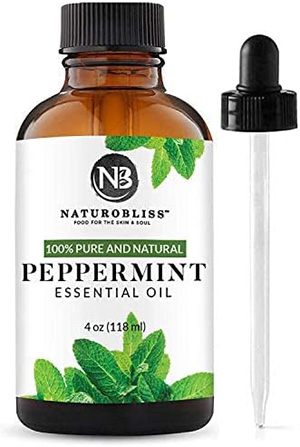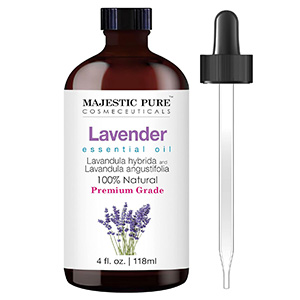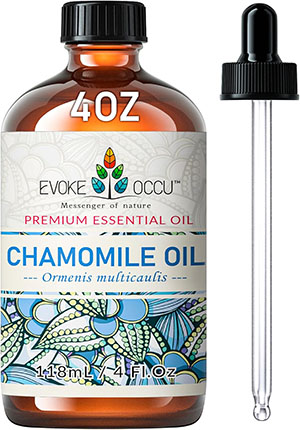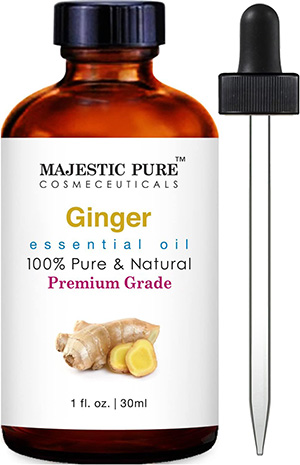Contents
Shivering under a mountain of blankets, forehead throbbing like a drum solo, you know fever has taken hold. The thermometer confirms your suspicions: a fiery number staring back, mocking your desire for comfort. You reach for the usual suspects – ibuprofen, maybe chicken soup – but that nagging cough and throbbing headache whisper for something more. Enter the intriguing world of essential oils for fever.
Imagine the fragrant embrace of peppermint, its cool breath whispering against your clammy skin. Picture eucalyptus, its potent punch clearing your stuffy head and leaving your lungs singing. Lavender, that gentle lullaby, promises restful sleep and soothing relief. These are no mere aromatherapy candles; these are potent allies in your battle against fever.
Nature’s Cool Companions: Top Essential Oils for Fever Relief

Each of the following oils brings a unique arsenal of cooling and soothing properties, ready to tackle your fever.
Peppermint Oil: Nature’s Icy Ally
Peppermint oil, one of the best essential oils for fever, packs a powerful punch. Its main ingredient, menthol, is behind that refreshing “Vicks VapoRub” feeling. It acts like a mini air conditioner on your skin, stimulating blood flow and promoting sweating, ultimately helping reduce body temperature. But its superpowers don’t stop there! Peppermint oil’s anti-inflammatory properties can quell that throbbing headache, and its refreshing aroma can clear your stuffy nose, leaving you feeling lighter and fresher.
Top Tips for Peppermint Power:
- Diffusing Delight: Add a few drops of peppermint oil to your diffuser and let the cool mist work its magic. Breathe deeply and enjoy the clearing sensation in your airways.
- Soothe Your Temples: Dilute peppermint oil with a carrier oil like jojoba and gently massage it onto your temples and forehead. The cooling menthol will take the edge off that pounding headache.
- Cool Compress Comfort: Soak a washcloth in cool water with a few drops of peppermint oil. Place it on your forehead or neck for a refreshing and effective fever-lowering treatment.
Eucalyptus Oil: The Respiratory Relief Champion
With its potent aroma that evokes invigorating forests, Eucalyptus oil is a champion for clear lungs and easy breathing. Its decongestant properties work wonders for relieving nasal congestion and coughs, often accompanying fevers. But that’s not all! Eucalyptus boasts antibacterial and antiviral properties, potentially tackling the pesky culprits causing your temperature to spike in the first place. Just take a deep breath (figuratively and literally!) and feel the eucalyptus clear your head and chest, making breathing and sleeping soundly easier.
Unleashing the Eucalyptus Magic:
- Steam Power: Put a few drops of eucalyptus oil in a hot water bowl, then slowly breathe in the steam. This helps loosen mucus and ease congestion, giving your lungs a much-needed sigh of relief.
- Chest Rub Rejuvenation: Mix carrier oil with eucalyptus oil to make it less intense. Then, gently rub it on your chest and back. The warming properties can loosen mucus and provide comfort, while the decongestant effect helps you breathe easier.
- Shower Symphony: Add a few drops of eucalyptus oil to your shower floor (avoid direct contact with the skin) and inhale the refreshing aroma while showering. This creates a spa-like experience that clears your head and eases congestion.
While peppermint and eucalyptus tackle the physical discomforts of fever, the gentle duo of lavender and chamomile offer solace for the mind and body. Imagine taking a warm bath with their soothing scents and letting your worries melt away like snowflakes on a spring day.
Lavender Oil: Serenity’s Sweet Embrace
With its soft purple hue and calming scent, lavender is a renowned stress-buster. When anxiety and discomfort often go hand-in-hand, lavender becomes a precious gift during a fever. Its soothing properties can lessen stress and promote restful sleep, crucial for fighting any underlying infection. Lavender’s anti-inflammatory effects can ease muscle aches and headaches, making you feel more relaxed and comfortable.
Embrace Lavender’s Tranquility:
- Pillow Power: Add a few drops of lavender oil to your pillowcase before drifting off to sleep. The pleasant smell will make you sleep peacefully, letting your body heal.
- Warm Bath Bliss: Draw a warm bath and add a few drops of lavender oil. Submerge yourself in the soothing warmth and inhale the calming fragrance. Lavender’s soothing properties will ease muscle tension and melt away stress.
- Aromatherapy on the Go: Carry a lavender essential oil rollerball in your purse or pocket. Whenever you feel anxious or restless, take a moment to inhale the gentle scent and find yourself back in a state of tranquility.
Chamomile Oil: Nature’s Gentle Healer
Chamomile, with its delicate daisy-like flowers and calming aroma, is a centuries-old remedy for restlessness and discomfort. Its gentle touch can relieve muscle aches, headaches, and anxiety during a fever. Chamomile’s anti-inflammatory properties can further soothe swollen lymph nodes and ease general discomfort. Its sedative effects can promote restful sleep, allowing your body to recover and rebuild its strength.
Unwind with Chamomile’s Serene Touch:
- Soothing Steam: Put a few drops of chamomile oil in a hot water bowl, then breathe in the steam. This works wonders for easing congestion, soothing sore throats, and promoting relaxation.
- Warm Compress Comfort: Soak a washcloth in warm water with a few drops of chamomile oil. Apply it to your forehead or chest for a gentle, anti-inflammatory effect that can soothe headaches and muscle aches.
- Nightly Ritual: Add a few drops of chamomile oil to your diffuser before bed. As you drift off to sleep, the calming aroma will ease anxiety and promote a restful night’s slumber, essential for your body’s healing process.
Lavender and chamomile are best used for relaxation and comfort rather than directly combating fever. Use them alongside other measures like hydration and rest, and always consult a healthcare professional for guidance.
Nature’s Warming Warrior: Ginger’s Fever-Fighting Power
Ginger’s potent punch comes from its active ingredient, gingerol. This spicy gem boasts anti-inflammatory and antiviral properties, potentially making it a double whammy against the underlying causes of fever. Its warming effect can help promote sweating, a natural way for your body to cool down. Plus, ginger can ease nausea and vomiting, familiar companions of fevers, making you feel more comfortable and able to recover.
Unleashing Ginger’s Fiery Spirit:
- Tea-riffic Ginger Brew: Steep fresh ginger slices in hot water for a delicious and soothing tea. Add a little honey to make it sweeter and more comforting. This warm drink makes you sweat and feel better when you’re sick.
- Ginger Foot Soak: Boil some ginger slices in water, then let it cool to a comfortable temperature. Soak your feet in the ginger water for 15-20 minutes. This warming treatment can boost circulation and provide soothing relief to achy muscles.
- Aromatherapy with a Kick: Add a few drops of ginger essential oil to your diffuser and enjoy its refreshing aroma. Ginger’s stimulating properties can help clear congestion and boost your immune system.
Remember: It’s usually safe to use ginger, but you should still talk to a doctor first. This is very important if you are a mother-to-be or breastfeeding, have a severe illness, or are worried about your health in any other way.
Safe and Effective Methods for Using Essential Oils for Fever
Discover how to harness the power of essential oils for fever relief. Remember, these potent plant extracts deserve respect and careful handling.
The Art of Dilution
Essential oils for fever are concentrated powerhouses meant to be used with care. Never apply them directly to your skin! Always dilute them in carrier oil – consider it your gentle, protective shield. One ounce of carrier oil should be mixed with two to three drops of essential oil. Popular carrier options include sweet almond, jojoba, and fractionated coconut oil.
Diffusion
Diffusing essential oils for fever relief can create a therapeutic atmosphere that reaps their airborne benefits. Add a few drops of the oil you want to use to a diffuser with water. Peppermint, eucalyptus, or lavender are all great options. Breathe deeply and enjoy the clearing and calming effects. This method is ideal for congestion, headaches, and fever-related anxiety.
Topical Application
While direct application is a no-go, you can utilize diluted essential oils for targeted relief. Massage the diluted mixture onto your temples for headache relief, rub it gently on your chest for a soothing effect, or apply it to the soles of your feet to promote sweating and relaxation. Remember, avoid sensitive areas like eyes and broken skin.
Baths & Compresses
Run a warm bath with a few drops of diluted essential oil to calm down and feel better. Lavender, chamomile, or ginger are all great choices. You could also soak a washcloth in cool water with a few drops of the right essential oil, like peppermint or eucalyptus, and then put it on your forehead or the back of your neck for a cool, soothing compress that will bring down your fever.
Steam Inhalation – Clearing Congestion
The steamy embrace of essential oils for fever can benefit nasal congestion and cough. Put a few drops of peppermint or eucalyptus oil in a bowl of hot water. Then, slowly breathe in the steam (not recommended for children). Drape a towel over your head to create a mini steam tent for enhanced effectiveness.
Remember:
- Safety first! Patch test any diluted oil on a small area of your skin before widespread use.
- Kids and pets should not be able to get essential oils.
- Never ingest essential oils for fever.
- Seek medical advice if your fever persists or worsens.
By adhering to these guidelines and choosing appropriate methods, you can harness the soothing potential of essential oils for fever relief. Stay safe, stay informed, and let the power of plants be your gentle allies on the path to optimal health.
Bolstering Your Fever-Fighting Arsenal
While essential oils for fever offer a beautiful bouquet of natural relief, remember they’re not the sole ingredients in the recipe for recovery. Let’s explore some complementary elements that can further empower your journey back to health:

- Hydration: Fever dehydrates. Combat this by sipping fluids diligently throughout the day. Water is your ultimate champion, but herbal teas and clear broths can also contribute to fluids and electrolytes. Drinks loaded with sugar and alcohol can make you feel even more thirsty. Every day, try to drink 8 to 10 glasses of water. You may need to change how much you drink if you sweat a lot.
- Relaxation: Your body needs energy to fight the underlying infection causing your fever. Prioritize rest. Snuggle under warm blankets, read a calming book or listen to soothing music. Please avoid too hard activities, and let your body heal itself.
- Cool Comforts: Wear loose, lightweight clothing in breathable fabrics like cotton. This helps keep your body temperature in check and keeps you from getting too hot. Keep the room temperature cool and well-ventilated to facilitate heat loss further. Lukewarm baths or cool compresses on your forehead can also offer temporary relief.
- Over-the-counter Allies: Over-the-counter (OTC) medicines like acetaminophen or ibuprofen can temporarily help if essential oils aren’t your first choice or your fever stays high. Always consult your doctor before taking any medication, especially if you have underlying health conditions or are pregnant. Remember, OTCs address the symptoms, not the root cause, so combine them with other natural remedies and rest for optimal recovery.
- Listen to Your Body: While essential oils for fever and natural methods can offer valuable support, they’re not substitutes for professional medical care. If your fever persists for more than 3 days, exceeds 103°F (39.4°C), or is accompanied by concerning symptoms like severe headache, rash, or difficulty breathing, seek immediate medical attention. Early diagnosis and treatment are crucial for faster recovery and preventing complications.
A fever is your body’s natural defense mechanism against illness. You can give your body the tools to fight the infection and get better by using natural remedies like essential oils, careful self-care, and medical help when needed.
Embracing the Full Spectrum of Fever Relief
Remember that fever is not an enemy but a signal. As you navigate the terrain of fever, remember this: you are not alone. Your body is a resilient fortress equipped with an innate intelligence. Use the tools presented here – the aromatic whispers of essential oils for fever, the mindful melodies of self-care, and the strength of seeking guidance – to orchestrate your symphony of healing. Trust your intuition, embrace the wisdom of nature, and emerge from the furnace of fever stronger, more connected, and empowered to face any future challenge with grace and resilience.
Health Disclaimer: The information on this website is for educational uses only and is not a substitute for professional medical advice. Always consult an authorized healthcare provider for any health concerns before using any herbal or natural remedy. We do not establish, treat, cure, or prevent any disease. Reliance on any material from this website is solely at your own risk. We are not responsible for any adverse effects resulting from the use of information or products mentioned on this website.
REFERENCES
- Buckle, J. (2015). Clinical aromatherapy: Essential oils in healthcare (3rd ed.). Churchill Livingstone.
- National Association for Holistic Aromatherapy (NAHA). (2023). Essential oils and fever: A guide to safe and effective use. https://naha.org/explore-aromatherapy/safety
- Tisserand, R., & Young, R. (2014). Essential oil safety: A guide for health care professionals (2nd ed.). Churchill Livingstone.
- Mayo Clinic. (2023). Fever. https://www.mayoclinic.org/diseases-conditions/fever/diagnosis-treatment/drc-20352764
- National Institutes of Health (NIH). (2023). Fever. https://www.nih.gov
- Centers for Disease Control and Prevention (CDC). (2023). Fever.
- American Botanical Council. https://www.herbalgram.org
- Healthline. https://health.clevelandclinic.org/essential-oils-101-do-they-work-how-do-you-use-them
- WebMD. https://www.webmd.com





